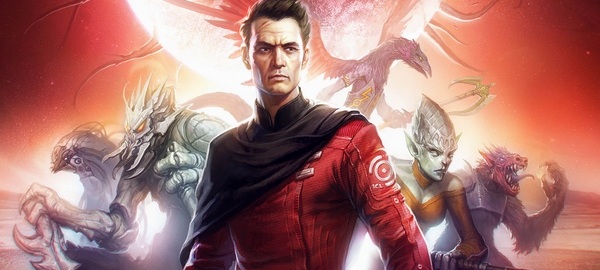Kerberos Studios released a new update for their stand-alone follow-up to the hit 4X-styled Sword of the Stars franchise, Sword of the Stars II: Lords of Winter. This update introduces new encyclopedia entries on Admirals and Missions, as well as new badges to all races. In addition, Kerberos Studios fixed lots of issues and promises to fix the annoying Sound bug in a future patch.
Sword of the Stars II: Lords of Winter continues the storyline and reveals the dark secrets of the ancient force responsible for tampering with the races in the original Sword of the Stars. Sword of the Stars II: Lords of Winter promises to be a major step forward in 4X gameplay, taking the easy-to-learn-but-hard-to-master philosophy set out in SotS1 and following that path to a new standard in space strategy games.
Here is the complete changelog of the R17606 update. As always, the update will be auto-downloaded next time you start the Steam client:
Critical fixes:
– Fixed station manager crash when while selecting a station.
– AI versus AI combat routines now internalized and will no longer appear to players.
– AI will now follow command point limits when creating and modifying fleets.
– Added tool tips to descriptions to all sections in the design screen.
– Reimplemented alien habitation modules.
– Improved Spectre AI so Spectres now spread out amoung targets.
– Spectres now do appropriate damage based on their size.
– Fixed a slowdown due to Spectre collision error.
– Admiral creation within empire now working correctly.Other fixes and changes:– Fixed Spectre spawn positions.
– Improved Spectre AI so Spectres will move from large to small target is the opportunity arises.
– Game will now start in full screen mode at native desktop resolution unless specified in options. (Game can still drop out of full screen if another program window overlaps the game. Use ALT+ENTER to return to full-screen again.)
– Weapons now apply their appropriate damage pattern based on their distance from target. (All weapons were using their max pattern range, often the weakest of all ranges)
– Turret fixes made to Human and Hiver Leviathans causing them to shoot through selves.
– Firing arc fixes to Heavy Beam modules.
– Heavy turret turn speed changes to be more realistic.
– Adjustments made to Disruptor weapon attacks.
– Fixed various minor bugs to station upgrades.
– Fixed Zuul and Tarka combat music themes not playing.
– Fixed crew death stuck above 0% (was not adding bonus crew when doing crew death calculations)
– Driveless ships in formation, provided they aren’t lead ship, will now fall behind and rest of formation will continue at formation speed. If the ship with the destroyed engine is lead, the formation will slow down as designed, in order to protect lead (presumablycommand) ship. Player can select ships to abandon lead ship if they wish.
– Fixed planetary spotter ranges (ships can now be spotted by planets when flying past)
– Planet Manger moved to its own dialog box.
– Added a delay to prevent any actions from taking place until everything is ready
– Compressed combat, gui and music sounds for greater efficiency.
– Fixed combat random encounter data being null
– fix incorrect stance facing (ship sometimes did not face target, now they will face target while in their stance)
– Level 5 Science Centers disabled temporarily.Additions:– New badges added to all races
– Additional load screen
– New encyclopedia entries on Admirals.
– New encyclopedia entries on Missions.
– Station Modules entries in the encyclopedia complete.

John is the founder and Editor in Chief at DSOGaming. He is a PC gaming fan and highly supports the modding and indie communities. Before creating DSOGaming, John worked on numerous gaming websites. While he is a die-hard PC gamer, his gaming roots can be found on consoles. John loved – and still does – the 16-bit consoles, and considers SNES to be one of the best consoles. Still, the PC platform won him over consoles. That was mainly due to 3DFX and its iconic dedicated 3D accelerator graphics card, Voodoo 2. John has also written a higher degree thesis on the “The Evolution of PC graphics cards.”
Contact: Email

